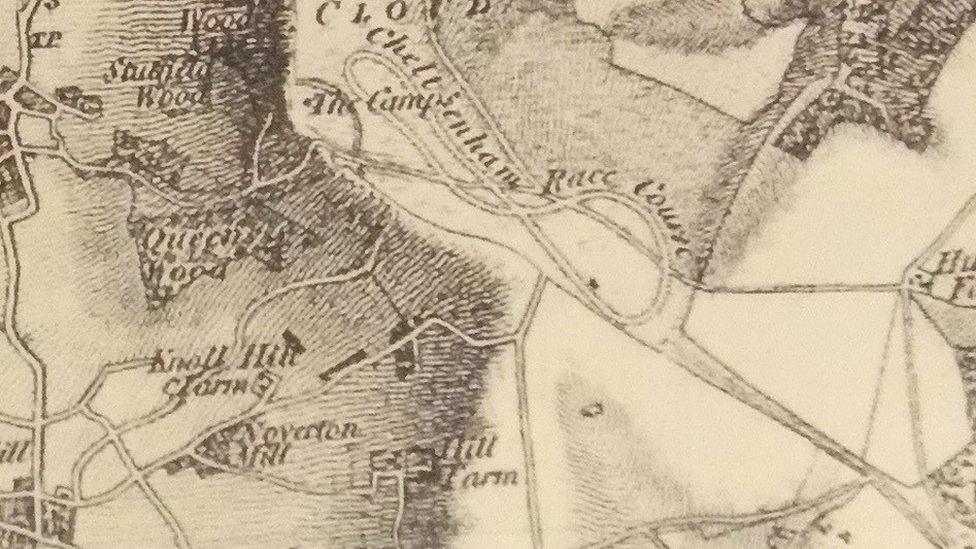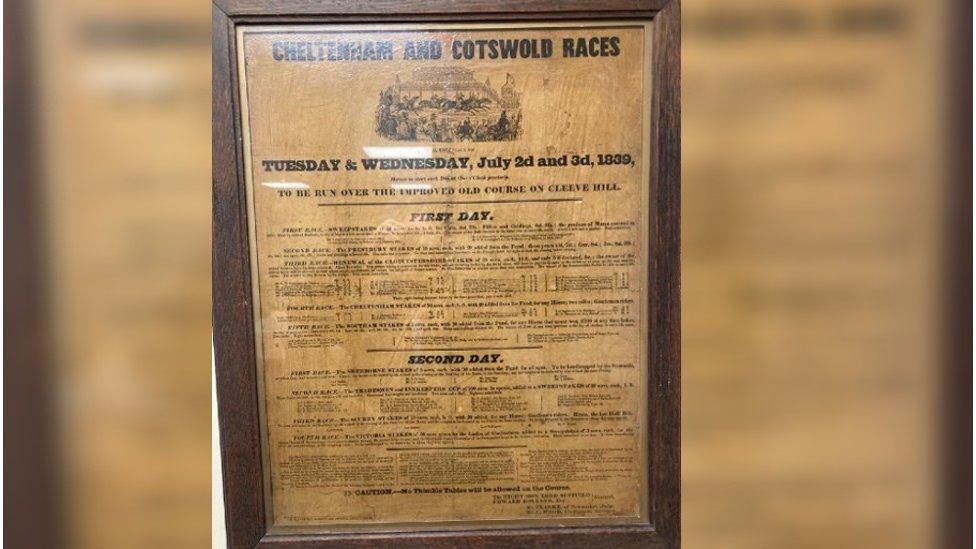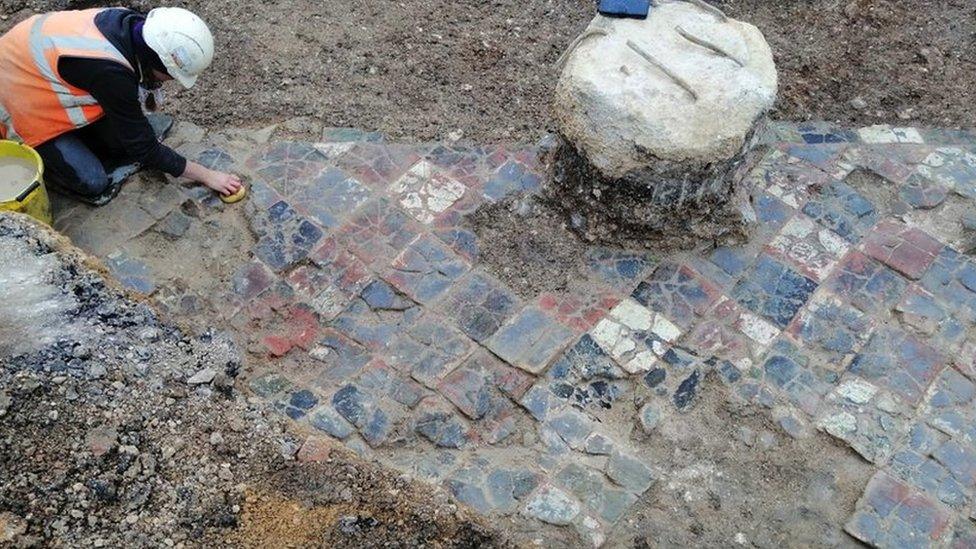The search for the original Cheltenham racecourse
- Published

Volunteers from the Gloucestershire Archaeology society have been looking for evidence using geophysical surveys
Amateur archaeologists have been surveying fields in search of "the original" Cheltenham racecourse.
It is thought a wooden grandstand on Cleeve Common - a few miles from the current racecourse - was destroyed in 1829 by followers of a rector who believed horseracing was evil.
Racing returned in 1834 with a second grandstand, this time made from stone.
Archaeology enthusiast Phil Cox said the history of horseracing "is very much part of Cheltenham".
Volunteers from the Gloucestershire Archaeology society have been using geophysical surveys to examine the site - looking for evidence of both the wooden and stone grandstands - for the past seven years.

A map shows the racecourse in 1828
Historian David Aldred said the stone grandstand was used until around 1840 and had been "splendid" - with a restaurant and coffee bar.
Male race-goers would sit on the roof of the structure and women would sit on the first floor, he said.
But it is thought the stone grandstand was dismantled as horseracing became less popular, and the stone was recycled.
Using laser imaging scanning, the group believes it has now found the outlines of the walls of the second grandstand and the foundations which were left behind.

Racing at Cleeve Hill stopped in 1840 as the sport became less popular
"Now we're trying to see if it's possible to locate the remains of the wooden bandstand," Mr Cox, secretary of Gloucestershire Archaeology, said.
Volunteer David Jones added: "We've got a map that shows where we think the racecourse went.
"It went around in a big left handed sweep, it was a figure of eight and ran for eight furlongs (1.6km)."

It is believed the original wooden grandstand burnt down in 1829 - and a new stone structure was built to replace it
It is thought this first, wooden, grandstand was destroyed, probably by the followers of Dean Francis Close, who preached about the evils associated with racing.
The society will now analyse their data to confirm whether it shows solid evidence of the stone grandstand.
They will then make a decision about whether to apply for permission to excavate the protected site, with the plan after that being to mark the site with an information board.

Follow BBC West on Facebook, external, Twitter, external and Instagram, external. Send your story ideas to: bristol@bbc.co.uk , external
Related topics
- Published10 March 2023

- Published3 February 2022
